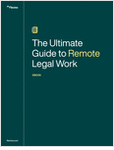The full case caption appears at the
end of this opinion.TOCI, Judge 1 The Arizona Department of Revenue (“ADOR”) appeals froma summary judgment for taxpayer Cable Plus Company, L.P. (“CablePlus”) on Cable Plus’s challenge to delinquenttelecommunications transaction privilege taxes assessed pursuantto Arizona Revised Statutes Annotated (“A.R.S.”) section 42-5064.2(1999). Section 42-5064(C) defines intrastatetelecommunications services as “transmitting signs, signals,writings, images, sounds, messages, data or other information ofany nature by wire, radio waves, light waves or otherelectromagnetic means if the information transmitted originatesand terminates in this state.” 2 The dispositive issue is whether Cable Plus transmitsinformation that “originates and terminates in this state” whenit electronically processes raw satellite programming from outof state so that the information can be received on a standardtelevision set. We agree with the tax court that theinformation transmitted by Cable Plus does not originate in thisstate and that Cable Plus did not engage in taxable intrastatetelecommunications business activities during the audit period. BACKGROUND 3 The facts are undisputed. During the audit period ofJanuary 1, 1990, through August 31, 1993, Cable Plus operated asatellite master antenna television (“SMATV”) service inArizona. Cable Plus sold its services to the residents ofthirteen apartment complexes and one mobile home park. 4 Quality audio signals and video images cannot travelfar on their own. When transmitted from their origin to anorbiting satellite, the audio signals and video images are.3″piggy-backed” onto a microwave carrier beam. After adjustingthe frequency of these signals to prevent interference withincoming signals, the satellite rebroadcasts them to a satellitedish on Earth. 5 Once received, the passenger signals are removed fromthe carrier beam and then translated so that they can beassigned to a new carrier signal that allows them to be transported over cable and received by standard television sets.Thus the programming information is transformed from one mediumof transmission to another. In our view, the process is notunlike the now archaic practice of translating electricaltelegraph signals from Morse code into a written form meaningfulto telegram recipients. 6 Cable Plus installed a satellite receiving dish, arooftop-mounted broadband UHF/VHF antenna, distribution cabling,and a “headend room” at each of the fourteen properties itserves. Cable Plus received locally-broadcast televisionsignals through the UHF/VHF antennae. Through its satellitedishes, Cable Plus received programming from such sources asHBO, ESPN, CNN, MTV and VH-1. In its headend room at eachproperty, Cable Plus translated the satellite signals into a usable form and assigned them to a new carrier signal for cabletransmission to its subscribers’ television sets.
[FOOTNOTE 1]7 For the audit period ADOR assessed a total of$57,974.04 in delinquent transaction privilege taxes againstCable Plus,
[FOOTNOTE 2] with interest, under the telecommunicationsclassification now defined by A.R.S. section 42-5064.8 Cable Plus protested the assessments unsuccessfullybefore ADOR and appealed to the tax court. On cross-motions forsummary judgment, the tax court ruled for Cable Plus. The courtreasoned:
The transaction privilege tax is imposedon revenues from the business of providingintrastate telecommunication services.A.R.S. �42-1310.04(A) [now A.R.S. section42-5064(A)]. Intrastate telecommunicationsservices are defined by A.R.S. �42-1310.04(C) [now A.R.S. section 42-5064(C)]as: ‘transmitting signs, signals, writings,images, sounds, messages, data or otherinformation of any nature by wire, radiowaves, light waves or other electromagneticmeans if the information transmittedoriginates and terminates in this state.’(Emphasis supplied.)
The information transmitted by Plaintiffdoes not originate in this state; only the.5termination occurs in this state. Theactual production of the information takesplace in studios outside of Arizona. Thiscourt therefore concludes that theactivities from which Plaintiff derives therevenue Defendant is seeking to tax, do notconstitute intrastate telecommunicationservices.
9 ADOR appeals from the judgment entered by the taxcourt. DISCUSSION 10 This court reviews the interpretations of statutes denovo. See RenalWest L.C. v. Arizona Dep’t of Revenue, 189 Ariz.409, 412, 943 P.2d 769, 772 (App. 1997). We strictly construetax exemptions. See id. When the question is whether the taxingstatute reaches the activity scrutinized, however, we liberallyresolve ambiguities in favor of the taxpayer. See State ex rel.Arizona Dep’t of Revenue v. Phoenix Lodge No. 708, Loyal Orderof Moose, Inc., 187 Ariz. 242, 248, 928 P.2d 666, 672 (App.1996); Kitchell Contractors, Inc. v. City of Phoenix, 151 Ariz.139, 143-44, 726 P.2d 236, 240-41 (App. 1986). In doing so wemay consider the statute’s context, its spirit and purpose, itshistorical background, its effects and consequences, itslanguage, and its subject matter. See Phoenix Lodge No. 708,187 Ariz. at 248, 928 P.2d at 672. 11 ADOR argues that Cable Plus is engaging in intrastatecommunications because the signals that it transmits to its.6subscribers originate in Cable Plus’s in-state headend rooms andterminate at its subscribers’ in-state television sets. ADORcorrectly points out that Cable Plus electronically processesraw satellite feeds in Arizona so that they may be received andunderstood on standard television sets and that Cable Plus thentransmits these processed signals from its Arizona headend roomsto its Arizona customers. 12 Contrary to ADOR’s analysis on appeal, however, thesignals whose intrastate transmission ADOR sought to tax hereare not the kind of signals to which A.R.S. section 42-5064(C)refers. The statutory term “signals” must be interpreted in thecontext in which it appears in section 42-5064(C):
(C) For purposes of this section,”intrastate telecommunications services”means transmitting signs, signals, writings,images, sounds, messages, data or otherinformation of any nature by wire, radiowaves, light waves or other electromagneticmeans if the information transmittedoriginates and terminates in this state.
13 The term signals appears in the context of signs,writings, images, sounds, and data, all of which are varietiesof information in and of themselves. In that context, it isclear that the signals whose intrastate transmission thelegislature sought to tax are those that are themselvesinformation, like voice or Morse code transmissions or streamingaudio and video feeds–in other words, the information content.7that the ultimate consumer receives and enjoys. The legislaturedid not intend to tax the signals that are used to make thetransmission of information possible, like the carrier signaland other electronic impulses that Cable Plus transmits from itsheadend rooms to its customers’ television sets. Signals ofthat kind are among the electromagnetic means, including wire,radio waves, and light waves, by which the varieties ofinformation that the statute lists are transmitted fromorigination to termination. 14 It is thus the origination point of the informationcontent that determines the applicability of the intrastatetelecommunications tax. Here it is undisputed that the “signs,signals, writings, images, sounds, messages, [and] data”comprising the information content for which Cable Plus’scustomers paid originated exclusively outside Arizona. 15 Our conclusion is supported by other considerations.Given the nature of modern telecommunications, the use ofsatellite communications is necessarily a dominating feature ofthe interstate telecommunications business. Moreover, as ADORitself notes:
[T]he information that Cable Plus receivesfrom its cable programmers consists of audioand video signals combined with a carriersignal. . . . The importance of the new,different carrier signal cannot be.8discounted. Without it, the basebandsignals are useless.
In other words, television programming cannot be transmitted bysatellite at all without local electronic reprocessing at thereceiving end. 16 Under ADOR’s analysis of A.R.S. section 42-5064,however, an interstate satellite transmission necessarily endsat the satellite dish; the required local reprocessing of thesatellite feed initiates a new intrastate transmission from thereprocessing business to its customers. Because this new”intrastate” transmission is the one for which the consumerpays, it is the only component of the transmission from theremote origination point to the end user that generates businessincome for the Arizona taxpayer. Following ADOR’s reasoning,when a satellite is used as the mode of transmission fortelevision programming, no interstate telecommunicationsbusiness is ever done at all. In this view, transmittingtelevision programming by way of a satellite in an orbit 23,000miles above the equator is always an exclusively intrastatebusiness. 17 ADOR’s reasoning ignores the clear legislativeimplication of A.R.S. section 42-5064. That statute expresslylimits the telecommunications classification to “the business ofproviding intrastate telecommunications services.” (Emphasis.9added.) This unmistakably reveals the legislature’sunderstanding that there exists a distinct, complementarybusiness, that of providing interstate telecommunicationsservices, which generates income that the legislature currentlychooses not to subject to transaction privilege taxation. Hadthe legislature intended the result of ADOR’s reasoning, itwould have simply taxed the business of providingtelecommunications services. 18 ADOR relies on Capitol Cablevision Corp. v. Hardesty,285 S.E.2d 412 (W. Va. 1981), as the only authority on point.There the West Virginia business and occupations tax was leviedon the proceeds of business activities performed solely withinWest Virginia. Id. at 415. In contrast to A.R.S. section 42-5064, the West Virginia tax applied regardless of whether anygiven taxpayer’s business was linked to or participated ininterstate commerce. 19 The taxpayer in question operated a community antennatelevision system (“CATV”). Id. at 414. It interceptedconventional television broadcast signals, amplified them, andtransmitted them to its subscribers along with its own localprogramming. Id. Because the taxpayer’s gross receipts derivedfrom business activities that occurred wholly within WestVirginia, the court held that the assessment in question did not.10violate the Commerce Clause. Id. at 418. Capitol Cablevisionprovides no authority for ADOR’s analysis. 20 Rather than supporting ADOR’s analysis, the court’sopinion in Capitol Cablevision supports our tax court’s view ofthe intended scope of A.R.S. section 42-5064. The CapitolCablevision court stated:
While the community antenna televisionbusiness is in interstate commerce and is anintegral part of interstate commerce(citation omitted), it constitutes the laststage of the interstate transmission of thetelevision signals. It is one continuousinterstate transmission to the viewer’stelevision set. . . .
Id. at 418 (quoting TV Pix Inc. v. Taylor, 304 F.Supp. 459, 463(D. Nev. 1968), aff’d mem., 396 U.S. 556 (1970)). The courtalso stated:
The service offered by the CATV systemoperator is not unlike that which theindividual viewer renders himself when heerects a television antenna on the roof ofhis house. The purpose of the activity isnot to generate new signals but to increasethe ability of the viewer to receiveexisting signals.
Id. at 420; cf. Golden Triangle Broadcasting, Inc. v. City ofPittsburgh, 377 A.2d 839, 846 (Pa. Comm. Ct. 1977), aff’d, 397A.2d 1147 (Pa. 1979) (“Whatever occurs in the ‘reprocessing,”cleaning up,’ ‘amplifying,’ and ‘modulating’ of the network.11signal, we are satisfied that it constitutes neither a’manufacturing’ of that signal or of the resulting image thatappears on the home television set.”). CONCLUSION 21 For the foregoing reasons, we affirm. Because the taxcourt correctly granted summary judgment for Cable Plus, we neednot address the remaining issues raised by the parties. PHILIP E. TOCI, Judge CONCURRING: REBECCA WHITE BERCH, Presiding Judge JAMES B. SULT, Judge FOOTNOTES FN1 Cable Plus charged its subscribers only for providing theprogramming that it received from its satellite feed, not forthe locally broadcast programming incorporated with it. FN1 The income on which the taxes were levied was actuallygenerated by the business activities of DMW Communications,Inc., BSA Communications, Inc., and WMP Communications, Inc., ofwhich Cable Plus became successor in interest.
CABLE PLUS COMPANY, L.P. v. ARIZONA DEPT. OF REVENUEIN THE COURT OF APPEALS STATE OF ARIZONA DIVISION ONE CABLE PLUS COMPANY, L.P., a Washington limited partnership, Plaintiff-Appellee, v. ARIZONA DEPARTMENT OF REVENUE, Defendant-Appellant. Filed 4-20-00 1 CA-TX 99-0009 DEPARTMENT T Appeal from the Arizona Tax Court Cause No. TX 97-00147 The Honorable Jeffrey S. Cates, Judge AFFIRMED Snell & Wilmer, L.L.P. by Janet E. Barton Attorneys for Plaintiff-Appellee Phoenix Janet Napolitano, Attorney General by Sara D. Branscum, Assistant Attorney General Attorneys for Defendant-Appellant Phoenix




